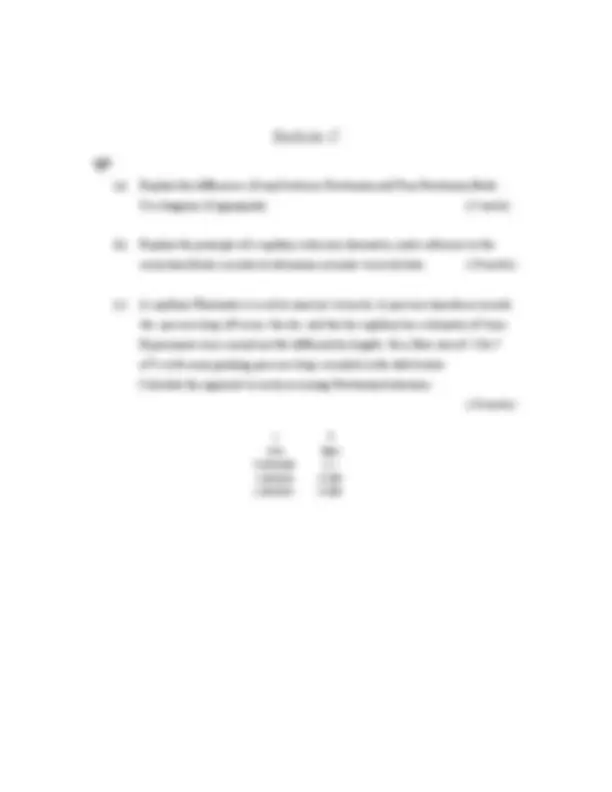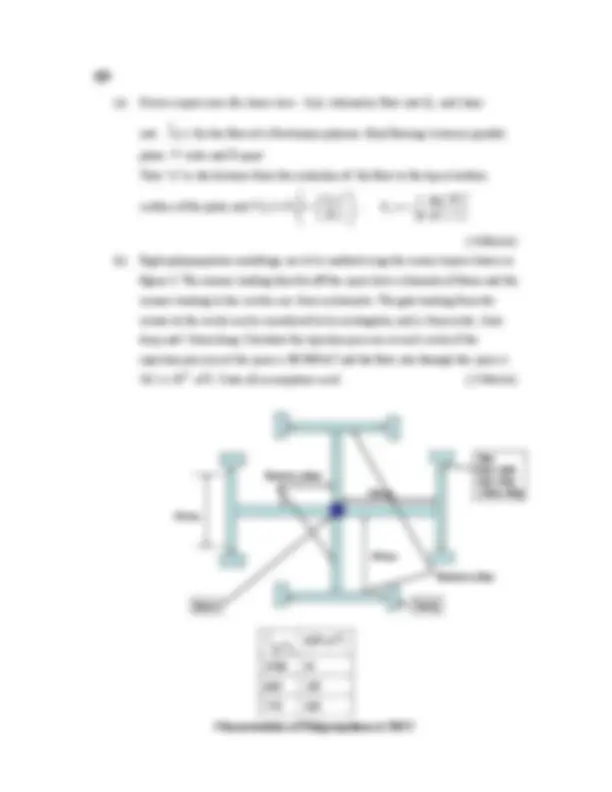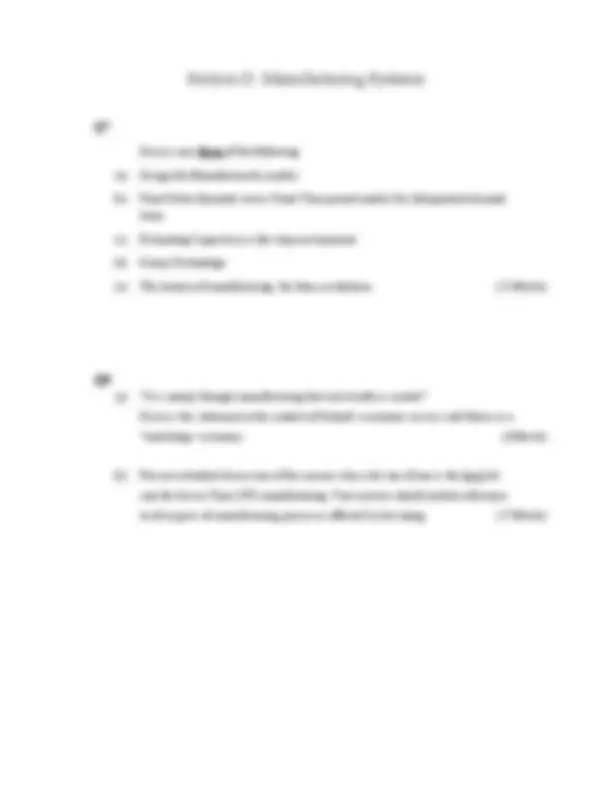





Study with the several resources on Docsity

Earn points by helping other students or get them with a premium plan


Prepare for your exams
Study with the several resources on Docsity

Earn points to download
Earn points by helping other students or get them with a premium plan
Community
Ask the community for help and clear up your study doubts
Discover the best universities in your country according to Docsity users
Free resources
Download our free guides on studying techniques, anxiety management strategies, and thesis advice from Docsity tutors
Main points of this past exam are: Manufacturing Technology, Main Spark Generation, Circuits, No-Wear Edm, Electrolyte, Photochemical Machining, Chemical Machining, Ultrasonic Machining, Laser Drilling, Electron Beam Welding
Typology: Exams
1 / 5

This page cannot be seen from the preview
Don't miss anything!




Instructions: Answer FOUR questions Answer ONE from each Section Use a separate answer book for each section
Examiners: Mr. M. P. O’Mahony Dr. G. Kelly Dr. M. Woods Mr. D. Fallon Mr. J. E. Hegarty Prof. M. Gilchrist
(a) What are the relative merits of the two main spark generation circuits used in EDM? (4 marks) (b) What are the conditions necessary for NO-WEAR EDM to take place? (8 Marks) (c) List FIVE properties of an Electrolyte for ECM. (5 Marks) (d) List the process steps in PhotoChemical Machining. (6 Marks) (e) List TWO applications of Chemical Machining. (2 Marks)
Discuss ONE of the following processes: Ultrasonic Machining Laser drilling/cutting Electron Beam Welding Headings which MUST be included are: Process Parameters; Process Capabilities and Typical applications. ( 25 Marks )
(a) AES and SIMS are techniques used to study material surfaces. Briefly explain how these techniques specifically analyse surfaces. What information is obtained from each technique for an analysed surface? State One advantage and ONE disadvantage of SIMS compared with AES for analysing surfaces. ( 9 marks )
(b) A 1.5 (^) μm coating of zinc is placed on a steel component. Describe a depth profiling technique, which may be used to validate the coating coverage and interface conditions. Sketch a diagram of the experimental set-up within the vacuum chamber. ( 8 marks ) (c) Discuss the use of Scanning Auger Microscopy (SAM) in the analysis of materials. Explain how the analysis is performed and give an example of a typical application. Why is this technique used in conjunction with Scanning Electron Microscopy (SEM)? ( 8 marks )
(a) A flat composite material with identical frictional properties of the fibres and matrix is to be imaged using Force Modulation Microscopy. Explain with the aid of a diagram how the fibres and matrix are imaged. ( 9 marks )
(b) Name TWO types of measurement problem associated with topography measurements with a Scanned Force Microscope. Explain how each problem affects the 2-D topographic image. ( 8 marks )
(c) Microscopic hardness and wear tests are to be performed on regions of different phases of an aluminium bronze alloy. Explain using diagrams how these tests are performed using a scanned force microscope. ( 8 marks )
(a) Derive expressions for shear stress τ(y), volumetric flow rate Q, and shear
rate ( y )
plates T wide and H apart. Take “y” as the distance from the centerline of the flow to the top or bottom
surface of the plate, and (^)
V y V y ,^2 (^0 )
dz V dp η ( 10 Marks ) (b) Eight polypropelene mouldings are to be molded using the runner layout shown in figure 3. The runners leading directly off the sprue have a diameter of 6mm and the runners leading to the cavities are 5mm in diameter. The gate leading from the runner to the cavity can be considered to be rectangular, and is 3mm wide, 2mm deep and 1.6mm long. Calculate the injection pressure at each cavity if the injection pressure at the sprue is 80 MN/m^2 and the flow rate through the sprue is 56.1 x 10-6^ m^3 /s. State all assumptions used. ( 15 Marks )
Characteristics of Polypropelene at 210◦C
Runners φ 6mm
100mm
100mm
100mm
Runners φ 5mm Cavity
Gate 3mm wide 2mm deep 1.6mm long
Sprue
Runners φ 6mm
100mm
100mm
100mm
Runners φ 5mm Cavity
Gate 3mm wide 2mm deep 1.6mm long
Sprue
Discuss any three of the following: (a) Design for Manufacture/Assembly (b) Fixed Order Quantity versus Fixed Time-period models for Independent demand items. (c) Estimating Capacity in a Job-shop environment (d) Group Technology (e) The history of manufacturing: the three revolutions. ( 25 Marks )
(a) “It is mainly through manufacturing that real wealth is created”. Discuss this statement in the context of Ireland’s economic success and future as a ‘knowledge’ economy. ( 8 Marks )
(b) Present a detailed discussion of the reasons why a lot size of one is the ideal lot size for Just in Time (JIT) manufacturing. Your answer should include references to all aspects of manufacturing processes affected by lot-sizing. ( 17 Marks )